Dyeing
Dyeing and dyestuff
Although most textile finds are in a bad condition and the colours are distorted due to metallic oxides or acidic soil, the original colour could sometimes be determined. Among the colours on wool are such radiant ones like read, purple, yellow, blue and a strong green, but also simpler colours such as brown. Different hues could be obtained e.g. by using wool of a different natural colour, for example grey instead of white. Dyeinf of already dyed textiles could result in mixed colour. Linen was mostly left undyed or bleached, which might be because it does not keep the dyestuff like animal fibers do. Coloured silk fragments have been found, too, but they have most likely been dyed in the East and have then been imported to Scandinavia.
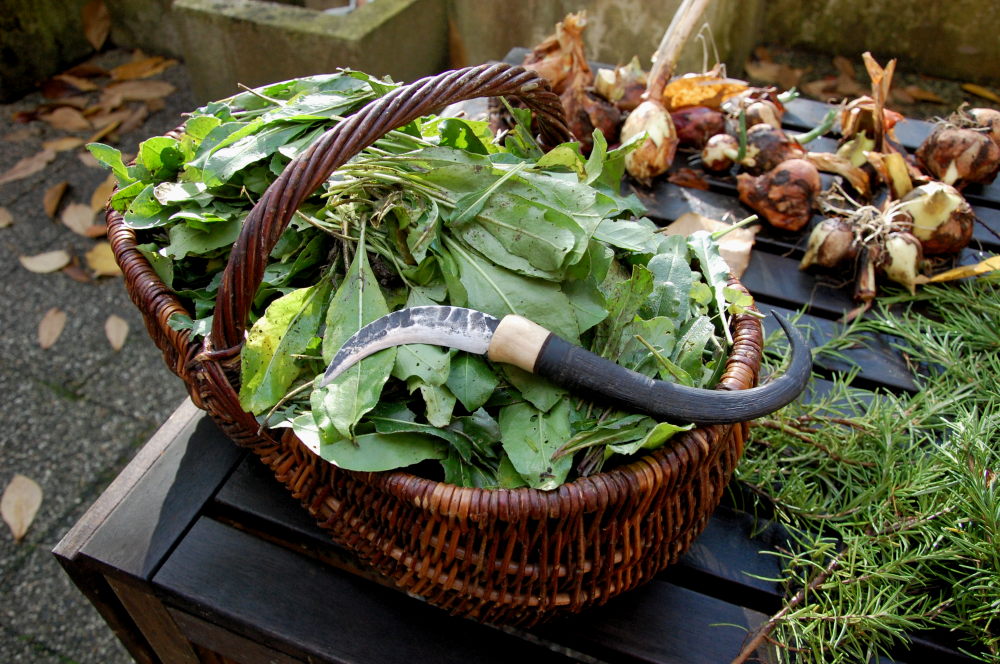
Usually, plants were used as dyestuff. We have no knowledge of any scientific evidence about the use of fungi for dyeing in the Viking Age. Because the process does not become more complicated with fungi instead of plants and because there are a lot of good dyeing fungi in northern Europe, the use of fungal dyestuff cannot be ruled out. The use of the following plants could be proven: Madder and bedstraw for red; woad for blue; walnut for brown. We have knowledge of the following non-herbal sources: Lichen for purple, kermes for red.
Apart from the aforementioned plants there are a lot more suitable for dyeing. A lot of plants dye yellow or green, but golden- or brownish-yellow, greyish blue and many brown hues are common as well. By combining different colours, a Viking outfit could be as colourful as desired. Depending on when the fibers are dyed during wool processing - i.e. whether the unspun wool, the spun yarn or the woven cloth are dyed - the garments would have been colourful from the start. There is, for example, a linen fragment from Birka which has been woven with threads of different colours.
Dyeing process
Before dyeing, the wool should be as clean as possible and free of lanolin. A mordant is used to increase the colour saturation. The mordant, usually a metal salt, has to be dissolved in water. When the wool is put into the water, the metal ions attach to the fibers and later "hold" the pigments during dyeing. Often alum is used as a mordant, copper-, iron- or chrome-compounds as well as urine can be used as well. Different mordants yield different colour hues. Modern dyers often use industrially synthesized mordants. A more traditional method would be to mine alum from the soil or extract the aluminium from club moss.
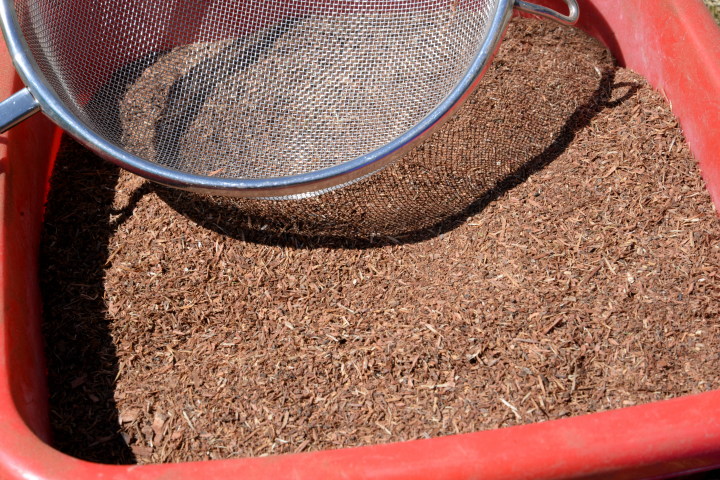
The collected herbs have to be soaked in water and then boiled. The water including the extracted pigments has to be filtered before the wool is put into it. In order to obtain a more saturated colour, the strained herbs can be put into a pouch (i.e. made of linen) and then returned into the water. Filtering the water is not obligate, but it helps in getting a regular colour without darker or lighter patches. Depending on the dyestuff, everything has to cook for approximately an hour. The wool then has to cool off and has to be rinsed several times. It can be used for further projects when it is dry.
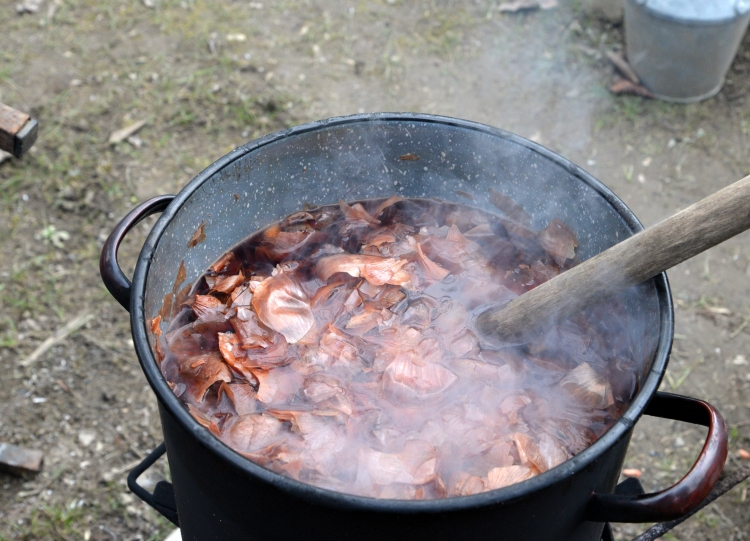
No dyeing = everything's greyish-brown?
Even if no or very little dyestuff is available, it was still possible for people to set tones with varying colours. Undyed wool can come along in colours ranging from black to grey, brown and white. A garment might look less dull than it would if it were held in a uniform colour, depending on the combination of those natural colours. How manifold this natural pallet manifests itself in the individual person depends on its availability, of course. Or to say it this way: Those who owned the same breed of sheep with the same fur colour for generations most likely wore mainly this colour in everyday life.
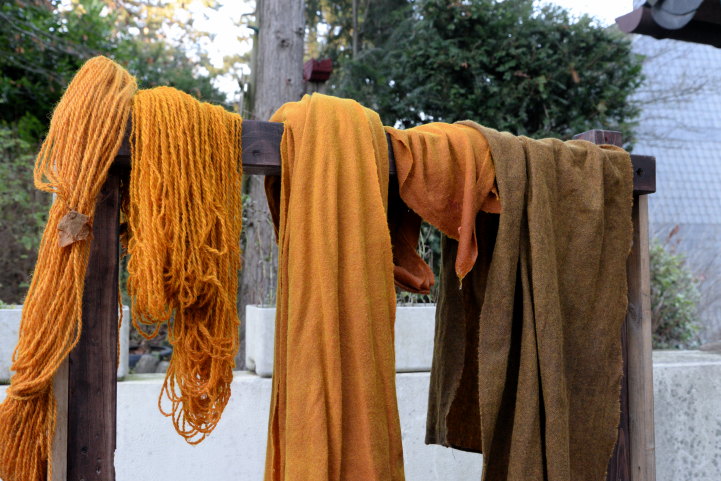
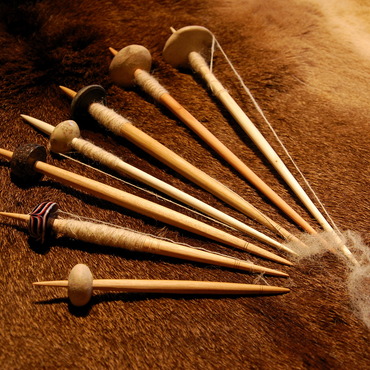
Levels of Textile Production
According to Eva Andersson Strand, four different levels of textile production can be distinguished.
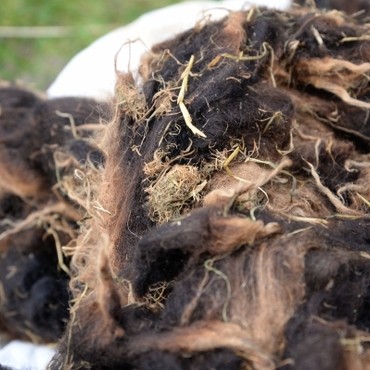
Raw Wool
The raw wool contains everything left in there when the sheep is shorn. Including insects, flora and things from the stable floor.
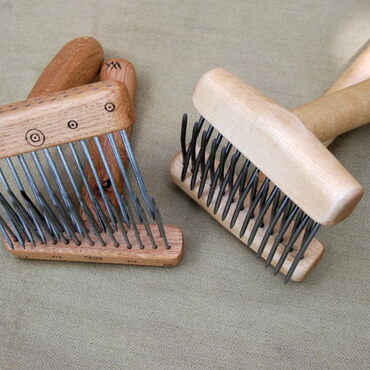
Combing
By combing, the wool is being prepared for spinning.
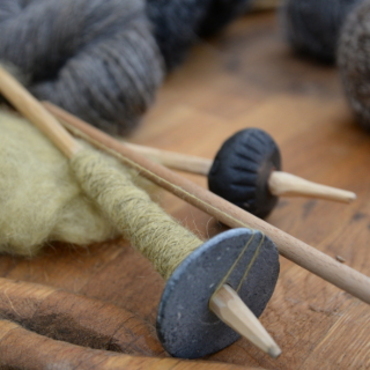
Spinning
With the spindle, the wool is spun into a thread.
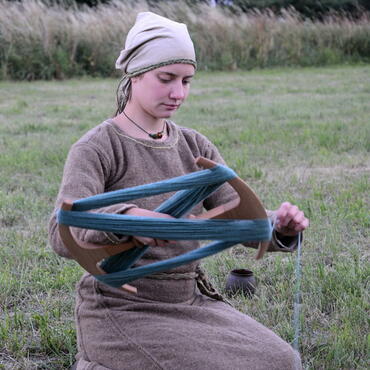
Using a niddy noddy
After spinning, the yarn might be wound onto a niddy noddy.
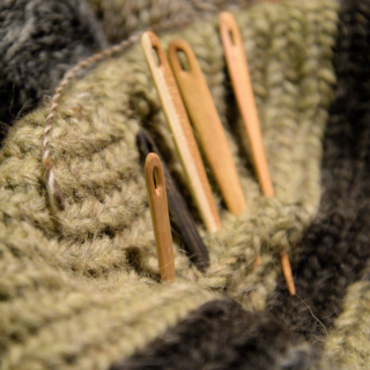
Nalbinding
Different garments can be produced with this old technique.
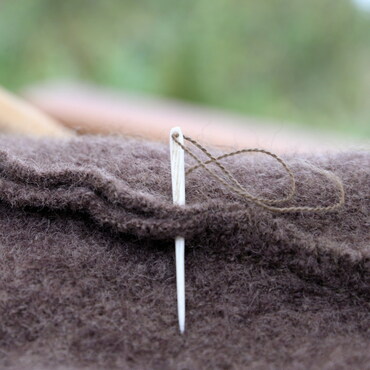
Sewing
Finally, pieces of cloth are sewn into garments.